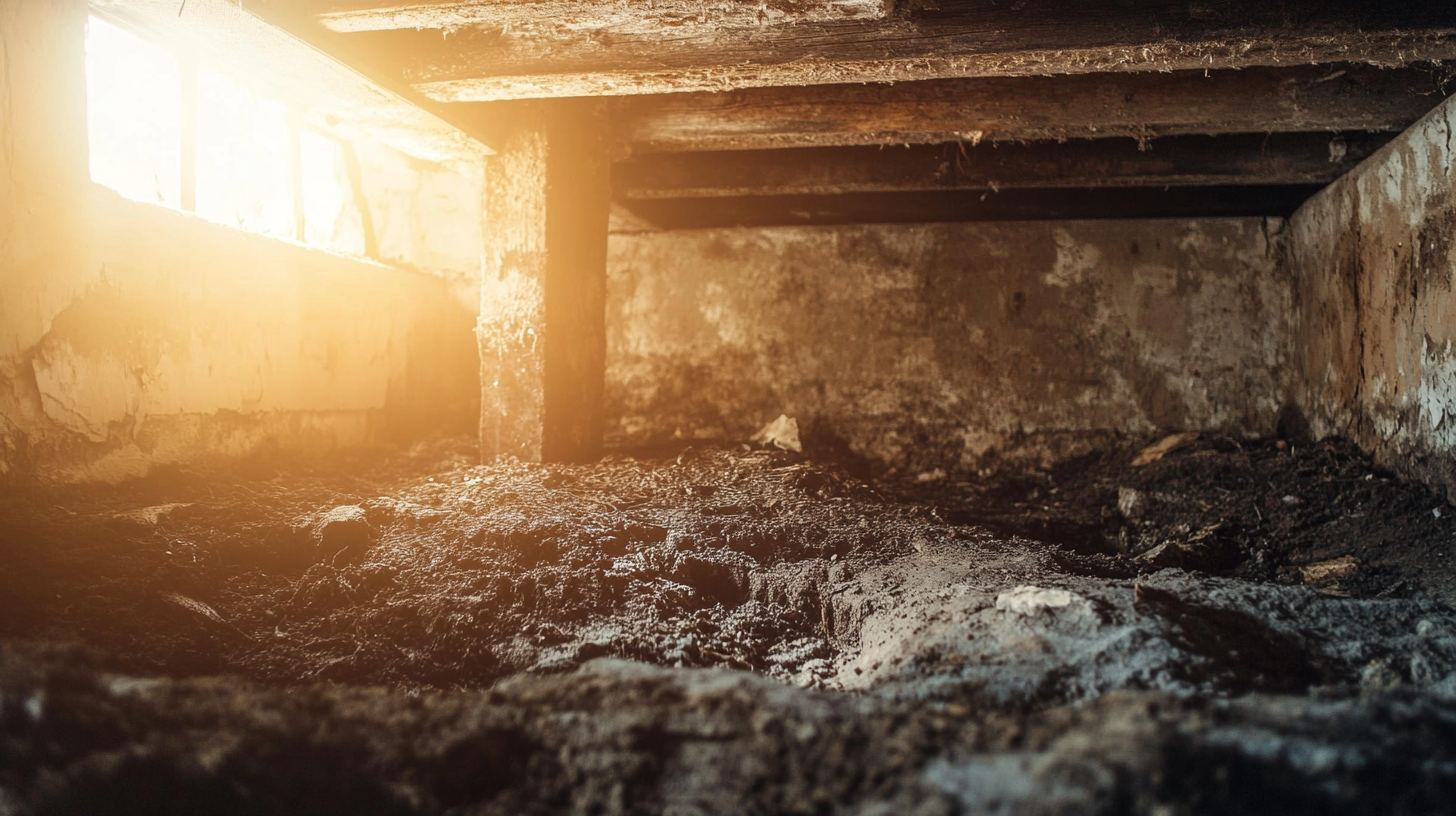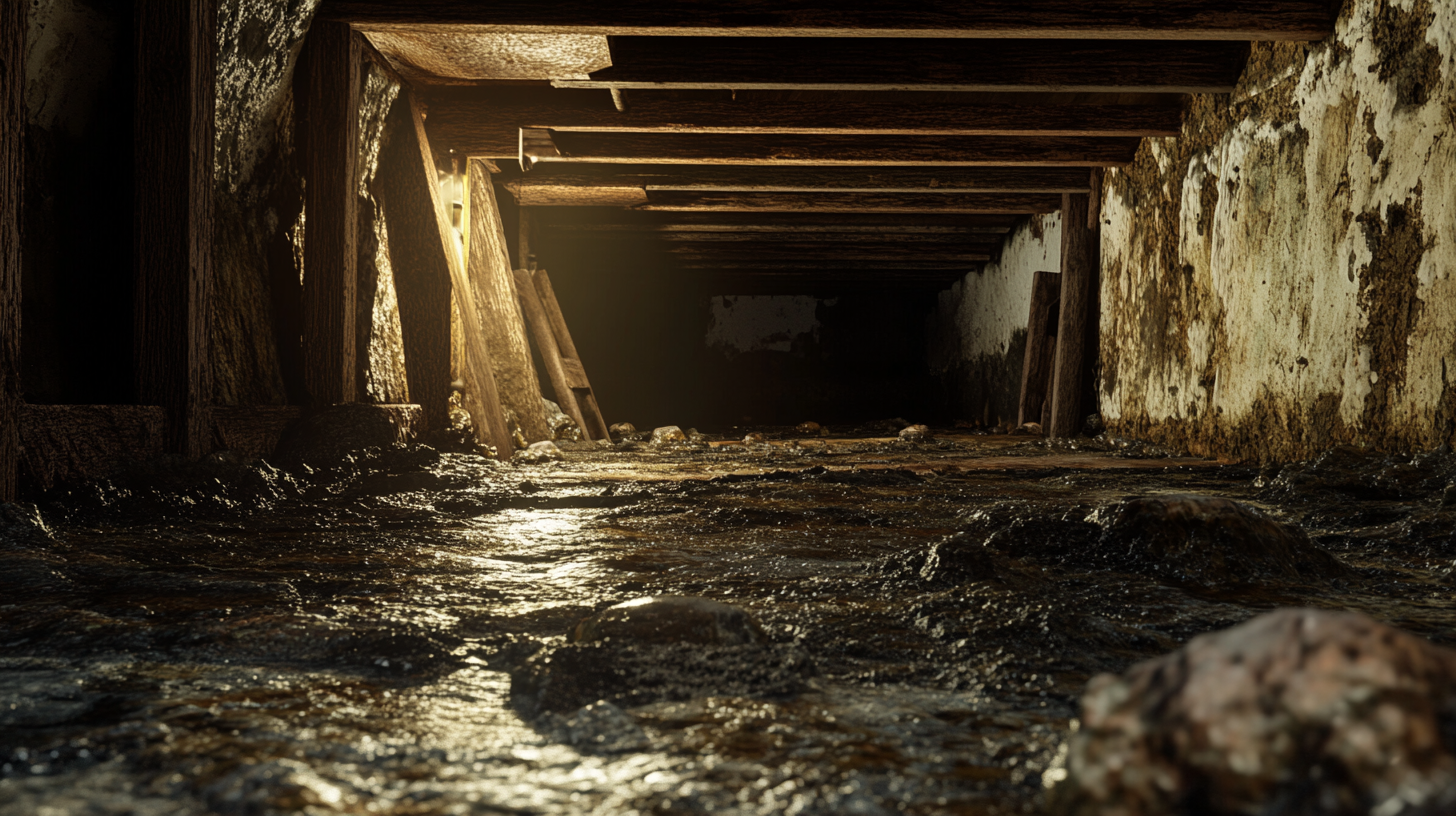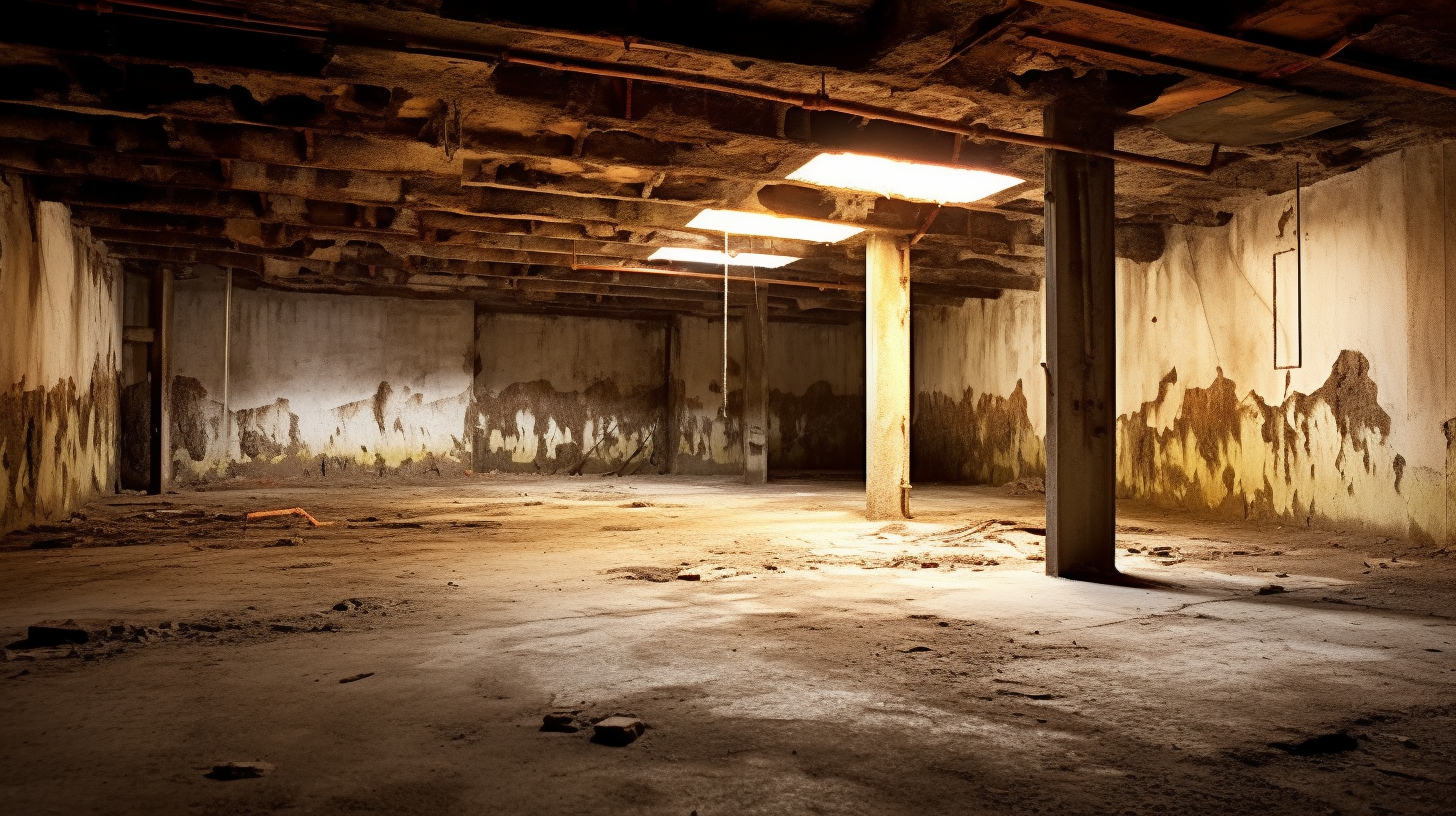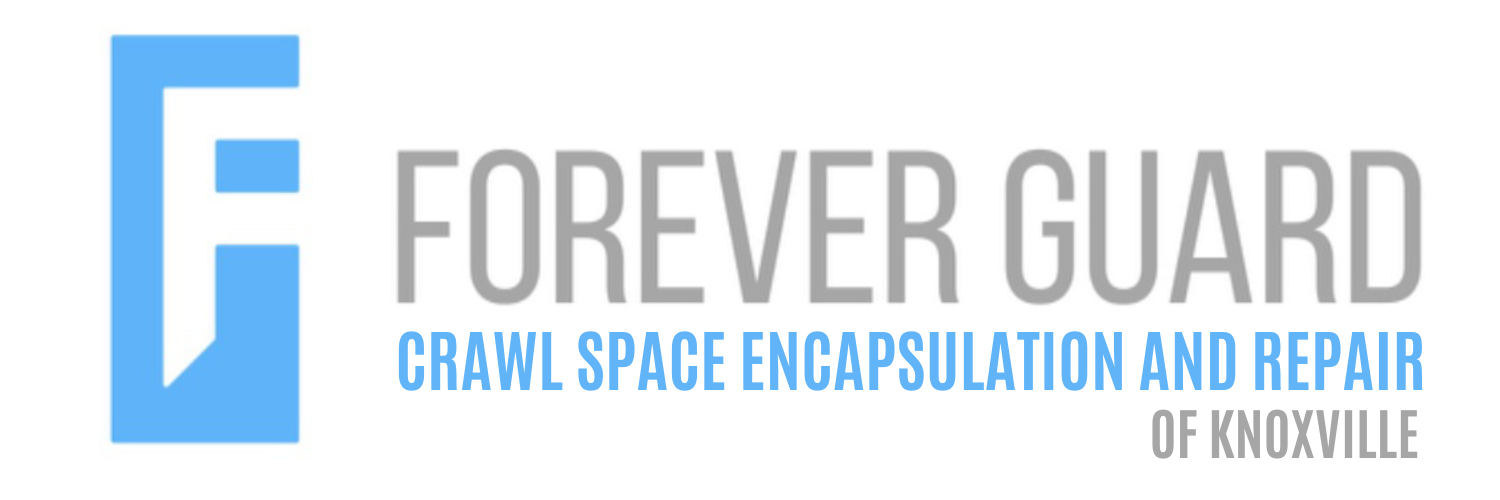Now IS THe Time To...

Crawl Space Services In Knoxville, TN
Stetson Howard: 865-432-6743
CRAWL SPACE ENCAPSULATION, REPAIR, WATERPROOFING & MOLD REMOVAL
No-Obligation, Free Inspections
No-Obligation Free Estimates
We Warranty All of Our Work
100% Satisfaction Guaranteed
Welcome to our insightful exploration of how waterproofing can significantly impact the resale value of your home. In the world of real estate, first impressions and structural integrity play pivotal roles in determining a property's market value. Through this discussion, we aim to shed light on the often-overlooked aspect of waterproofing and its crucial role in home maintenance, which can be a game-changer in the real estate market.
Waterproofing, a key element of home maintenance, goes beyond just preventing water intrusion. It speaks volumes about the overall care and upkeep of a property. A well-maintained home, free from dampness, leaks, and structural water damage, not only assures potential buyers of its sound condition but also reflects a sense of responsibility and attention to detail from the homeowner.
In this blog, we will delve into how effective waterproofing can elevate your home's appeal to prospective buyers, enhance its longevity, and ultimately contribute to a higher resale value. We'll explore the various facets of waterproofing, from basement to roof, and how these improvements resonate with homebuyers' concerns about durability and comfort.
Join us as we navigate the intricacies of home maintenance in the real estate context, highlighting waterproofing as a key contributor to preserving and enhancing the value of your property. Whether you're planning to sell your home or simply looking to maintain it for the long term, understanding the impact of waterproofing is essential.
The Importance of Waterproofing in Home Maintenance
Waterproofing is a critical aspect of home maintenance, often undervalued until a problem arises. It plays a vital role in preserving the integrity and value of your home. Understanding the basics of waterproofing and its role as a preventative measure can save homeowners from costly repairs and structural issues down the line.
Understanding Waterproofing
Waterproofing in home care refers to the process of making a structure water-resistant or waterproof so that it remains relatively unaffected by water or resisting the ingress of water under specified conditions. This can include various methods and materials used to protect the structural integrity of the home from the damaging effects of water.
- Common Areas for Waterproofing: The most critical areas for waterproofing in a home include the basement, roof, walls, and foundations. Bathrooms and kitchens are also key areas due to their frequent exposure to water.
- Types of Waterproofing: Methods range from the use of sealants and coatings to the installation of membranes and drainage systems. Each type is suited to different parts of the home and varying degrees of water exposure.
Waterproofing as a Preventative Measure
The primary role of waterproofing is to prevent water from entering and damaging the structure of a home. This is crucial in maintaining the home's condition and ensuring the safety and comfort of its inhabitants.
- Preventing Structural Damage: Water ingress can lead to issues like mold growth, wood rot, and deterioration of building materials. Waterproofing helps in preventing these problems, thereby preserving the structural integrity of the home.
- Long-term Benefits: Regularly maintaining a waterproof home can lead to significant long-term benefits. These include reduced maintenance costs, higher energy efficiency (as dampness can affect insulation), and an overall increase in the property's value. A well-maintained waterproofing system also contributes to a healthier living environment by preventing the growth of mold and mildew.
In conclusion, waterproofing is an essential component of home maintenance, offering both immediate and long-term benefits. By understanding its importance and implementing effective waterproofing strategies, homeowners can protect their investment and ensure the longevity and safety of their homes.
How Waterproofing Enhances Home Resale Value
Waterproofing is more than just a protective measure for your home; it's a strategic investment that can significantly enhance your property's resale value. In the competitive real estate market, homeowners who prioritize waterproofing not only safeguard their property but also position it as a more attractive and valuable asset. Let's explore how waterproofing can be a key selling point and its impact on home appraisals and valuation.
Attracting Potential Buyers
In the home-buying process, buyers are not just looking for aesthetic appeal but also for homes that are structurally sound and well-maintained. Waterproofing plays a crucial role in fulfilling these criteria.
- Waterproofing as a Key Selling Point: A home with a robust waterproofing system offers peace of mind to potential buyers. It assures them that the property is protected against potential water damage, a common concern especially in areas prone to heavy rains or flooding.
- Making a Home More Attractive to Buyers: Homes with waterproofed basements, roofs, and foundations stand out in the market. Buyers are often willing to pay a premium for homes where critical maintenance issues, like waterproofing, have already been addressed. This is particularly true for older homes, where water damage can be a significant concern.
Appraisal and Valuation Benefits
The benefits of waterproofing extend to the appraisal and valuation of your property, often resulting in a higher market value.
- Impact on Home Appraisals: Appraisers take into account the condition and upkeep of a property when determining its value. A home with effective waterproofing will typically appraise higher than a comparable property without such measures. This is because waterproofing is seen as a preventative measure that reduces the risk of future structural issues.
- Examples of Increased Property Value: For instance, a waterproofed basement can be a huge plus, potentially increasing the usable living space of a home. Similarly, a waterproofed roof or well-maintained drainage system can add to the property's value by ensuring the longevity of the structure.
In conclusion, investing in waterproofing not only protects your home from potential damage but also enhances its appeal and value in the real estate market. By highlighting waterproofing as a feature of your home, you can attract more potential buyers and achieve a higher appraisal value, making it a wise decision for any homeowner looking to sell their property.
Types of Waterproofing and Their ROI
Waterproofing is a crucial aspect of home maintenance, offering both protective and financial benefits. Understanding the different types of waterproofing and their respective returns on investment can help homeowners make informed decisions. Let's delve into the comparison of interior versus exterior waterproofing methods and conduct a cost-benefit analysis to understand their impact on home value.
Interior vs. Exterior Waterproofing
The choice between interior and exterior waterproofing depends on various factors, including the specific needs of the property, budget, and desired outcome.
Comparison of Methods:
- Interior Waterproofing: Often less invasive and more cost-effective, interior waterproofing includes methods like sealants, coatings, and interior drainage systems. It's ideal for addressing issues like minor dampness or basement water seepage.
- Exterior Waterproofing: More comprehensive, this method involves excavating around the home to install drainage systems, waterproof membranes, and protective coatings. It's effective for preventing water intrusion from the outside and is essential for comprehensive moisture control.
ROI for Different Techniques:
- Interior Waterproofing ROI: Generally offers a good return by preventing internal damage and improving the livability of spaces like basements. It's a wise choice for immediate, localized problems.
- Exterior Waterproofing ROI: Though more expensive, it can significantly increase a home's value by providing a long-term solution to water intrusion. It's particularly valuable in areas prone to heavy rainfall or flooding.
Cost-Benefit Analysis
Evaluating the costs of waterproofing against the potential increase in home value is crucial for understanding its financial impact.
Analysis of Waterproofing Costs vs. Increased Home Value:
- The cost of waterproofing varies based on the method chosen, the size of the area, and the severity of the issue. While interior waterproofing might cost less upfront, exterior waterproofing, though more expensive, can offer greater long-term value by thoroughly addressing potential water issues.
- The increase in home value post-waterproofing can be substantial, especially in markets where buyers are concerned about water damage. A waterproofed home can attract a broader pool of buyers and command a higher selling price.
Case Studies or Real-Life Examples:
- A case study might involve a homeowner who invested in exterior waterproofing and saw their home's value increase by a significant percentage, far outweighing the initial investment.
- Another example could be a comparison of two similar homes, where the one with comprehensive waterproofing sold for a higher price and more quickly than the one without.
In conclusion, both interior and exterior waterproofing can offer a good return on investment, with the choice depending on individual circumstances and needs. The long-term financial benefits, in terms of increased home value and reduced risk of future damage, make waterproofing a wise investment for homeowners.
Waterproofing and Home Inspections
Waterproofing plays a significant role in the home inspection process, impacting both the seller's and buyer's perspectives. A thorough understanding of how waterproofing is evaluated during home inspections and how to address any issues can be crucial for a successful real estate transaction. Let's delve into the importance of waterproofing in home inspection reports and the steps to address waterproofing issues before a sale.
Waterproofing in Home Inspection Reports
The condition of a home's waterproofing system is a critical element in home inspection reports. It can significantly influence the outcome of the inspection, affecting both the sale process and the property's value.
- Importance in Home Inspection Processes: Home inspectors closely examine the waterproofing aspects of a property, including the basement, foundation, walls, and roof. They look for signs of water damage, leaks, and the effectiveness of existing waterproofing measures. The state of waterproofing can reveal a lot about the overall maintenance and longevity of the property.
- Impact on Inspection Outcomes: Effective and well-maintained waterproofing can lead to a positive report, enhancing the property's appeal to potential buyers. Conversely, issues like dampness, mold, or water damage can raise red flags, potentially leading to renegotiations, lower sale prices, or even deal breakouts.
Addressing Waterproofing Issues Before Sale
For sellers, addressing waterproofing issues before listing the property can significantly impact the sale process and the home's market value.
Tips for Handling Existing Issues:
- Conduct a pre-inspection to identify any waterproofing issues.
- Address critical issues like leaks, dampness, or mold growth. Simple fixes might include resealing windows and doors, while more significant issues may require professional intervention.
- Ensure that basements, crawl spaces, and attics are dry and well-maintained.
Impact of Pre-Sale Waterproofing Improvements:
- Making waterproofing improvements before listing can enhance the home's appeal, making it more attractive to potential buyers.
- It can also increase the property's value and lead to a smoother sale process, as buyers are less likely to encounter surprises during their inspection.
- Proactively addressing these issues can demonstrate to buyers that the home has been well cared for, potentially leading to higher offers and a quicker sale.
In conclusion, waterproofing is a key factor in home inspections and can significantly influence the real estate transaction process. By understanding its importance and taking proactive steps to address any issues, sellers can improve their chances of a successful and profitable home sale.
Marketing Waterproofed Homes
In the competitive real estate market, highlighting unique features of a property can significantly enhance its appeal. Waterproofing, often an overlooked aspect, can be a key selling point that sets a home apart. Understanding how to effectively market waterproofed homes can be a game-changer in attracting potential buyers and negotiating a favorable sale price.
Highlighting Waterproofing in Listings
When listing a waterproofed home, it's crucial to strategically showcase this feature to attract discerning buyers who value quality and maintenance.
Strategies for Showcasing Waterproofing:
- Include detailed descriptions of the waterproofing measures in place, such as basement sealants, sump pumps, or French drains.
- Highlight the benefits, like a dry basement, reduced risk of mold, and the longevity of the home’s structure.
- Use high-quality images or videos that show the condition of basements, roofs, and other areas where waterproofing has been implemented.
Communicating the Value to Potential Buyers:
- Emphasize the peace of mind that comes with a waterproofed home, especially in regions prone to heavy rainfall or flooding.
- Outline the cost savings in long-term maintenance and potential energy efficiency improvements.
- Provide documentation or warranties related to waterproofing work, as this can reassure buyers about the quality and durability of the work done.
Negotiating with Waterproofing as a Feature
Waterproofing can be a powerful tool in price negotiations, offering sellers leverage and buyers assurance of the property’s condition.
Leveraging Waterproofing in Price Negotiations:
- Use the waterproofing as a justification for a higher asking price, citing the added value and protection it provides.
- Prepare to discuss the specifics of the waterproofing work, including the materials used and the longevity of the solutions.
Understanding Buyer Perceptions:
- Recognize that buyers may view waterproofing as a preventive measure, indicative of a well-maintained home.
- Be prepared for savvy buyers who might see waterproofing as essential rather than a bonus, especially in areas where water damage is common.
In conclusion, effectively marketing a waterproofed home involves highlighting the feature prominently in listings and using it as a key point in negotiations. By communicating the value and benefits of waterproofing, sellers can attract serious buyers and potentially achieve a higher sale price, making it a win-win for both parties.
FAQs
Recent Blog Posts
Crawl Space News







